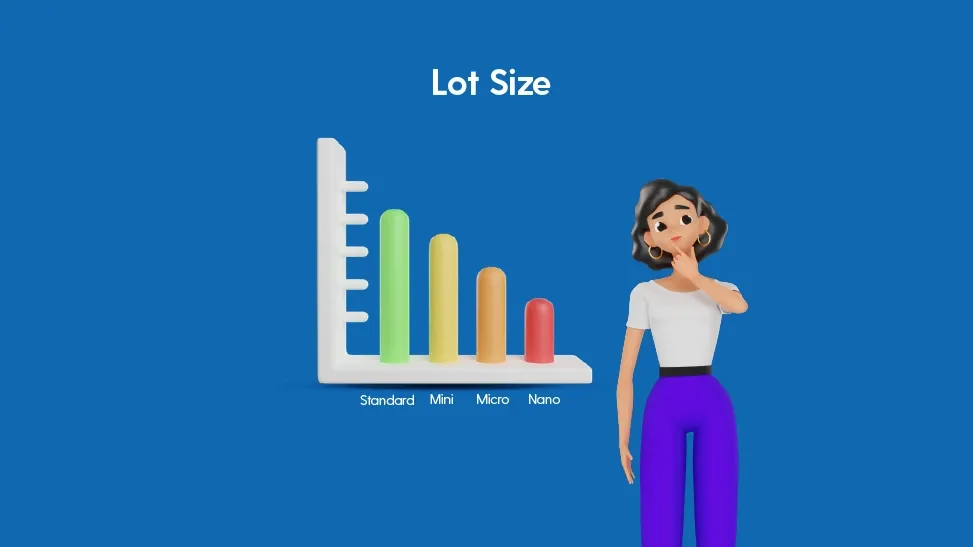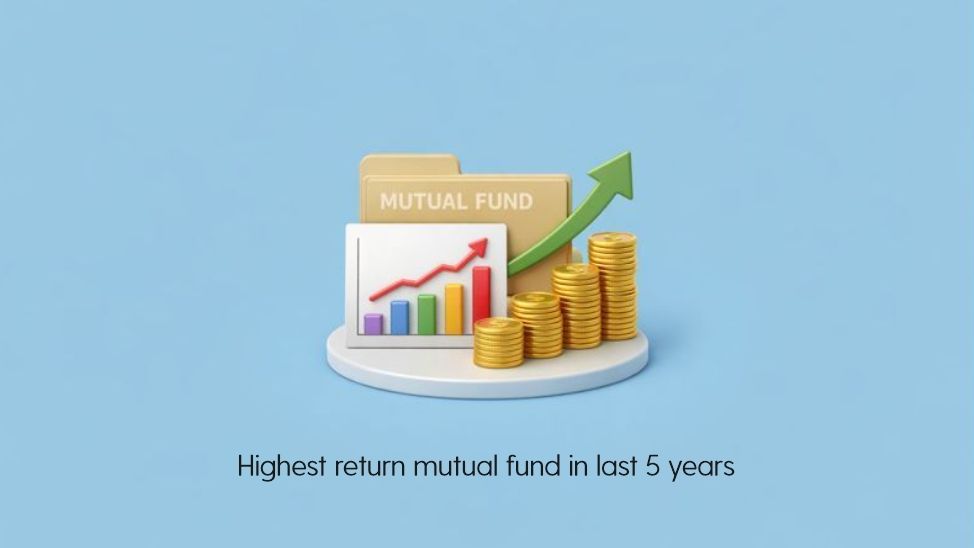What is Lot Size in Stock Market

- Published Date: November 11, 2024
- Updated Date: November 27, 2025
- By Team Choice
If you've just started exploring the Indian stock market, you might have encountered a puzzling situation: for instance, you’re trying to buy shares worth ₹5,000, only to have your order rejected despite having sufficient funds. The reason? You might not have considered the concept of a lot size.
Trading in the stock market isn't just about knowing which shares to buy—it's also about understanding how many shares you can buy or sell at once. Let’s read more about it below.
Lot Size In Share Market:
A marketable lot, commonly known as a market lot or lot size in the share market, is the standardized quantity of shares you need to buy or sell in a single transaction. It's the minimum number of shares you must buy or sell when trading in specific market segments. Think of it as shopping at a wholesale market versus a retail store. While your local kirana store lets you buy a single packet of biscuits, a wholesale shop might only sell them by the dozen.
Similarly, while you can buy even a single share of companies like TCS or Reliance in the regular cash market, trading in futures and options (F&O) requires you to deal with specific lot sizes.
Stock Lot Size List
| Lot Size | Units |
|---|---|
| Standard | 100,000 |
| Mini | 10,000 |
| Micro | 1,000 |
| Nano | 100 |
Types of Lot Sizes
Cash Market (Equity) Stock Lot Size:
- In the cash segment, most stocks can be bought or sold in quantities as small as 1 share
- This makes equity trading more accessible to small investors
- Example: You can buy just 1 share of Reliance Industries or TCS
Futures & Options (F&O Lot Size):
- F&O trading requires dealing in standard lot sizes
- These lot sizes are fixed by stock exchanges
- Different stocks have different option lot sizes based on their price and market cap
Commodity Lot Size:
- Commodity futures also trade in fixed lot sizes
- Each commodity has its specific lot size
- Example: Gold futures might trade in lots of 100 grams
Understanding Market Lots in Different Segments
| Stock Lot Size | Future Lot Size | Commodity Trading Lot Size |
|---|---|---|
| Each stock in F&O has a predetermined lot size | Similar to options trading | Varies by commodity type |
| Updated periodically by exchanges | Must match the standard lot size for futures contracts | Examples: |
| Example lot sizes: - HDFC Bank: 500 shares - TCS: 150 shares - Reliance: 250 shares |
Helps in maintaining market liquidity and standardization | - Gold: 100 grams - Silver: 5 kg - Crude Oil: 100 barrels |
Why Do Market Lots Matter?
Understanding market lots is crucial because they directly impact:
- Your Trading Capital: When you're trading in F&O, you need enough capital to cover the entire lot size. For instance, if HDFC Bank has a lot size of 500 shares, and each share costs ₹1,500, you're looking at a position value of ₹7,50,000 (though you'll need to pay only the required margin).
- Risk Management: Market lots help you calculate your potential profit or loss more accurately. A one-rupee movement in the stock price impacts your position by the lot size. In our HDFC Bank example, a ₹1 price movement means a ₹500 impact on your position.
Different Markets, Different Rules
Cash Market: Maximum Flexibility
In the cash segment of Indian stock exchanges, most stocks can be bought or sold in quantities as small as one share. This makes the cash market ideal for:
- New investors starting with limited capital
- Investors looking to build long-term portfolios
- Those who want to practice trading with minimal risk
F&O Market: Standardised Lots
The F&O segment operates differently. Here's what you need to know:
The f&o lot sizes are fixed by exchanges and typically reviewed quarterly. For example:
- Reliance Industries: 250 shares per lot
- TCS: 150 shares per lot
- HDFC Bank: 500 shares per lot
These numbers are carefully chosen by exchanges based on factors like:
- Share price
- Market capitalization
- Trading volume
- Overall market conditions
Practical Aspects of Trading in Lots
For New Investors
If you're new to the market, start with the cash segment. Here's why:
- You can invest with smaller amounts
- It's easier to manage risk
- You can build confidence gradually
- There's more room for learning and adjustment
For Regular Traders
As you gain experience, you might want to explore F&O trading. Remember to:
- Always check current lot sizes before trading
- Calculate total margin requirements
- Consider your risk capacity per lot
- Monitor any changes in lot sizes
Impact of Lot Size on Trading Strategy
| Small Lot Size Stocks | Big Lot Size Stocks |
|---|---|
| Lower capital requirement | Higher capital requirement |
| Suitable for small retail investors | Better suited for institutional investors |
| More flexible position sizing | May offer better liquidity |
Making Informed Decisions
Checking Lot Sizes
Most trading platforms display lot sizes in their contract specifications. You can also:
- Visit the NSE or BSE websites
- Check your trading platform
- Refer to broker communications
- Use stock market apps like Choice FinX
Understanding the Impact on Capital
Your capital requirement depends on:
- Market segment (cash or F&O)
- Lot size of the chosen stock
- Current market price
- Applicable margins
- Your broker's requirements
Looking Ahead: Market Trends
The Indian stock market continues to evolve, with exchanges periodically reviewing and adjusting lot sizes to maintain market efficiency. Stay informed about these changes through:
- Exchange notifications
- Broker communications
- Trading platform updates
- Market news
Key Takeaways
Understanding market lots is fundamental to successful trading in Indian markets. Remember:
- Cash market offers maximum flexibility - you can do single-share trading
- F&O trading requires attention to lot sizes
- Capital requirements vary by segment
- Regular monitoring of lot size changes is important
Next Steps in Your Trading Journey
- Start with cash market trading
- Learn about different lot sizes
- Practice with small positions
- Gradually explore F&O trading
- Keep updated with lot size changes
Remember: Always check the current lot sizes before trading, as they may be updated by exchanges periodically. This helps avoid trading errors and ensures better risk management.
Note: This article is for educational purposes. Always consult a trusted and experienced financial advisor before making investment decisions.
Key FAQs
What is lot full form in trading?
LOT stands for "Lot Of Trade," representing the standard trading unit in markets.
Can lot sizes change?
Yes, exchanges review and may modify lot sizes based on market conditions and share prices periodically, typically quarterly.
How do I check current lot sizes?
Visit exchange websites, check your trading platform, or consult your broker.
How many shares are in one lot?
It varies by segment and security. In the cash market, you can buy single shares, while F&O lots are predetermined by exchanges.
What is the lot size in Sensex?
For Sensex futures and options, the lot size is typically 15 units.
How do lot sizes affect my trading costs?
Larger lots mean:
- Higher brokerage per trade
- More margin requirements
- Increased impact cost
- Higher STT and other charges
Can I trade less than one lot in F&O?
No, F&O trading requires dealing in complete lots only.
Recommended for you

FII DII Data - Live Data

Share Market Prediction For Tomorrow

Market Prediction Today (1th December 2025)
